
Work with Honor: Rogelio Villarosa shares the secret to his success and longevity
Rogelio Villarosa founded Rogelio G. Villarosa Architects in 1972. From a sole proprietorship, he transitioned to a partnership with his son, Roy, in 1983, and shortened the firm’s name to R. Villarosa Architects. The firm has designed numerous hotels, clubhouses, office buildings, hospitals, schools, resorts, condominiums, high-end residences and mixed use projects, and has consistently ranked among BCI Asia’s Top 10 Architecture Firms in the country. Forty-three years since setting up his office, Rogelio Villarosa reflects on how building and maintaining the trust of clients ensured his success.
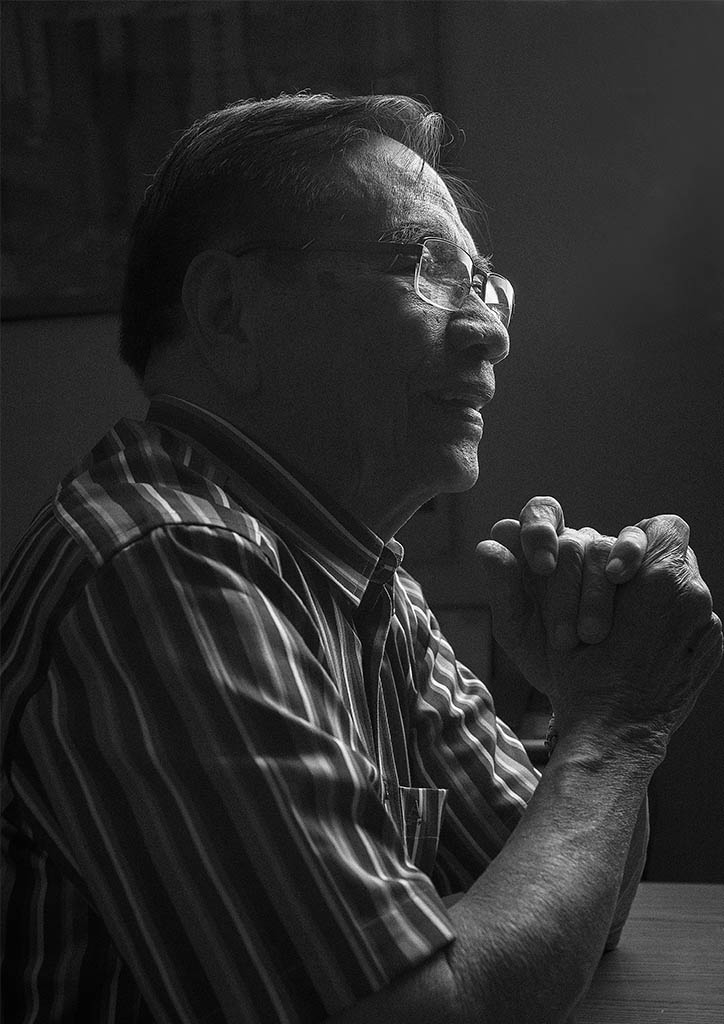
BluPrint: What spurred you to start your own firm?
Roger Villarosa: To tell you the truth, setting up my own firm never crossed my mind early on. I had many developmental years after graduating from Mapua.
Why not? Kasi probinsyano ako [laughs]. I grew up in Bulacan, a son of a farmer. For a probinsyano in the 1950s, it was already an achievement to be employed in Manila, otherwise you would spend the rest of your life planting rice in a field. So during those developmental years, all I was after was to make a living. I thought, if I study the work better, my pay will get higher. That’s it!
What was it like after graduation? I apprenticed under Architect Felipe Mendoza for two years. I graduated July 5, 1954, from Mapua, then I took the board exams July 12. I had one week to study! Modesty aside, I topped the board. Right after graduation, a friend’s uncle requested that the two of us do a building of his in Mango Avenue. The pay was so little, but we did the project simply to have a project. During construction, my friend and I would go to the site, and before leaving, his aunt would hand us two pesos, our payment for the day. Paghahatian pa namin yun! [Editor’s note: 1 peso then would be equivalent to 60 pesos today.] When you’re just starting out, you have to admit to yourself that you are not yet that good. So that means, any project should be good for you. I have this battle cry: “In loving work, there is honor.” ‘Di ako namimili ng project, hanggang ngayon. I’m willing to design a doghouse, as long as the dog does not bite me. [Laughs]
YOU MIGHT LIKE: NEX Tower’s humanist design makes good business sense
After that first project, I worked with Architect Mendoza for a few months, and then I left for the US Federal Government in Clark Field, Pampanga. I was an architectural coordinator there for three years. After that, I joined a PIA (Philippine Institute of Architects) collaborative. I was appointed job captain for the construction of the Capitol Buildings. But after two years there, my PIA bosses assigned me to manage a project—the National Library of the Philippines along Kalaw Avenue. “Manage” means I had to produce everything. That was the first big project that I handled on my own, and it’s still standing.

Why did they choose you? They all trusted me. Three of them were my board examiners, so they knew me. They thought, ‘Di lang pala sa school magaling! Most importantly, they heard about my work ethic from PIA. The National Library project gave me the confidence that I could handle my own firm—any firm. I started from zero, and managed it all the way to completion. When the bosses assigned it to me, I asked, “Where do I hold office?” They said, “Take care of it.” When I asked whether they would provide me people and equipment, they said, “We told you, you take care of it!” [Laughs] I handled the collection of fees, the awarding of contracts…I was even the construction manager! We finished the National Library on schedule, I’m proud to say.
Now that you had gained the confidence to manage a firm, did you set up your own after that? No, matagal pa! It wasn’t on my mind yet. When the National Library was almost finished, one of the architects involved, Francisco Fajardo, introduced me to Gabby Formoso, the one they called a “society architect.” Apparently, he had told Formoso, “Roger can manage your projects, your office,” so Formoso was already interested in hiring me as an associate. It was just a matter of my accepting it. When I met Formoso, I told him, “I can promise you two things—honesty and loyalty.” He was happy to hear that.
READ MORE: Creating beauty for others: IP Santos’ work philosophy
True enough, I did handle his office the way I was trained to handle other projects. In those days, you wouldn’t see Formoso in the drafting or design room. I took care of everything as if it were my own firm. He gave me full rein. Hindi na siya nakialam talaga. My experience at Clark Field, PIA, and the National Library project prepared me. It’s all about preparation—how well you do in anything comes down to how well you’ve prepared.
Just to show you how Formoso had 100% trust in me, one time, we attended a party at the house of one of our clients, Don Luis Fernandez, chairman of the Filinvest board. Formoso arrived ahead of me. Nagkataon, four of our other clients were there too, all asking him about the status of their projects. You know what he told them when he saw me coming? “O, eto na ‘yung arkitekto niyo, itanong niyo na sa kanya lahat!” And then he left me with the clients! [Laughs]

How long did you stay with Formoso? Ten years. When I told him I wanted to leave, he was surprised. I was surprised myself! [Laughs]
Were you unhappy working for him? No, he treated me well. I’m thankful for the trust he placed in me, because that built me up and gave me confidence. But I did not just drop Formoso like a hot potato—I prepared his office to operate efficiently. I came up with an efficient system of documenting projects, because before they didn’t have one. I recruited junior associates and trained them, so when I left, they were able to take over. And they had to be thankful for me because when I left, they became partners. Maybe Formoso realized that if he didn’t make them partners, they would leave him also! [Laughs]
So why did you leave? I just woke up one morning and asked myself, what am I doing? That’s it! Then I found out later my wife had been praying for me to leave, nag-novena pa siya. That means the thought was given to me by God! [Laughs] I guess I just wanted the peace to do projects on my own.
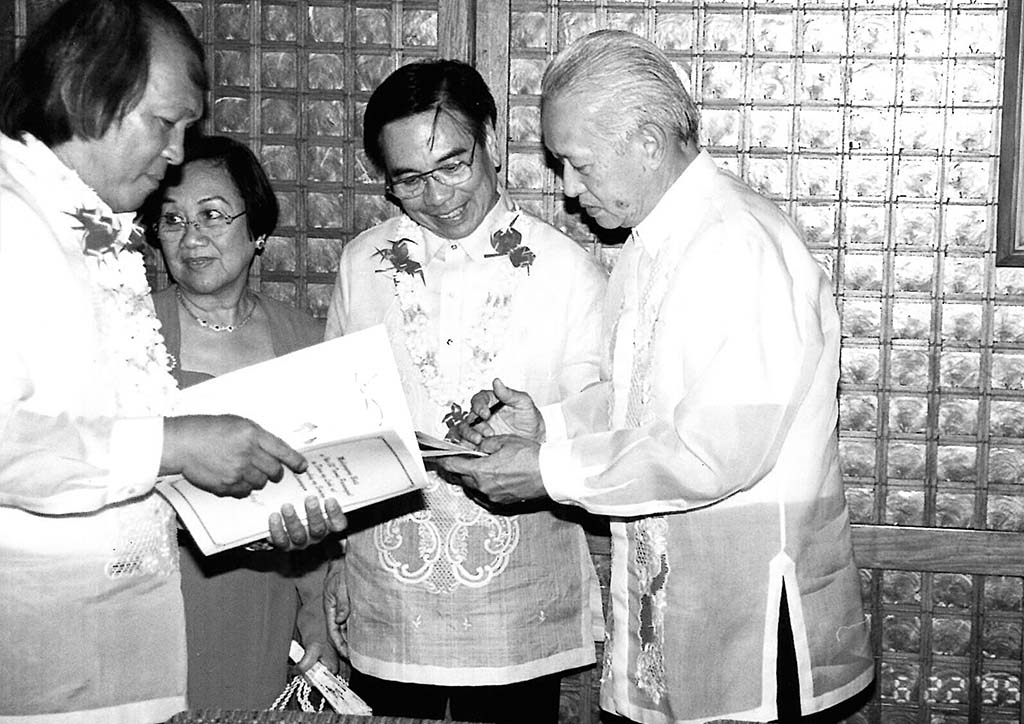
What was the most important lesson you learned in those years? I learned to concentrate my efforts first on the most critical or problematic item of the job. I would try to solve that first, and not let others handle it. For example, I have to connect two buildings together. The connection between the two is a problem, because you have to think of leaks, access, earthquakes…so I concentrate on that first, before I even design the buildings. Even in college, that’s what I did. I wasn’t very good in Math, so I put time and effort in studying it. When I took the board, my grade in Math was even higher than Design! So concentrating on your weaknesses is important, because everything else will be easy.
Before leaving Formoso, did you look for clients so that when you left, you’d have projects already lined up? No, that’s below the belt. When I was still in Formoso, some clients offered me projects to do on my own, but I refused. I made a promise to my boss that I would be honest and loyal. I told them that if they really wanted me to do their project, they should commission the office, and I would handle it myself, and not delegate it to an associate.
Why did they want you to do private projects for them? Because I was always hands-on. I’m like an on-call doctor. Just the other day, a client called and asked when it was convenient for me to meet him, whether tomorrow or next week. I said “No, let’s meet now.” That’s how I am.

You drop whatever you’re doing? Yes. Clients should always be the number one priority. Production can be delegated, but building relationships with clients is invaluable. My clients know they can call me anytime, and I will be with them anytime. That’s because I follow this principle: “Opportunity is bald-headed. When it passes by, you grab it by the neck.” [Laughs]
So, that became your brand. I would say so. But more than that, my integrity is my brand. One time, I was invited to a small gathering by one of my clients in the construction supply business. Someone asked her why she always gets me for projects, when she knew a lot of other architects and designers. I’ll never forget her answer: “Well, I know who all the crooks are.” [Laughs] That’s when I realized, my integrity and honesty is my brand.
What happened after you left Formoso? I left in 1972, and in April of that same year, I had my own office. But a few months later, I thought to myself, “I did wrong.” You know why? Because in September, Martial Law was declared.
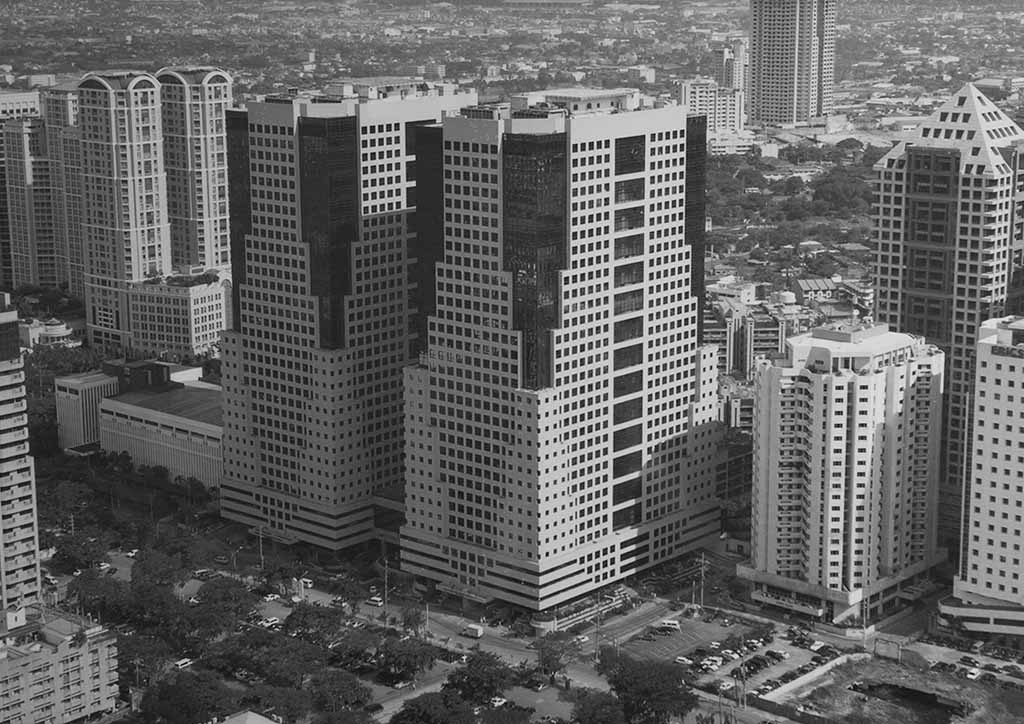
Oh no! But I’m telling you, in the early years of Martial Law, it was great. People obeyed laws. For example, having tints on cars was made illegal. The next day, you didn’t see any tinted cars. If you were caught jaywalking, you were forced to sweep along EDSA. There was no more red tape! I remember going to a government office to collect a payment for a small project, but it was not processed yet. I said, “I’m not coming back here, so mail me the money.” True enough, my payment was mailed two weeks later. But this absence of red tape lasted only about six months. Then it went back to the old ways. It was a dream. How I wish it had stayed that way.
YOU MIGHT LIKE: David Consunji on working with Arguelles, Nakpil, Zaragoza and more
Where was your first office? The Merchant Building along Buendia, Makati. On my first day, I worked alone in my 30-square meter office. After two days, I started looking for people. I hired two. Then I kept expanding the office, eventually it grew to 120 square meters, and I had 20 people. In 1980, I moved to Strata 100 in Ortigas because traffic in Makati was terrible. If you think traffic in Makati is bad now, back then, doble-doble pa!
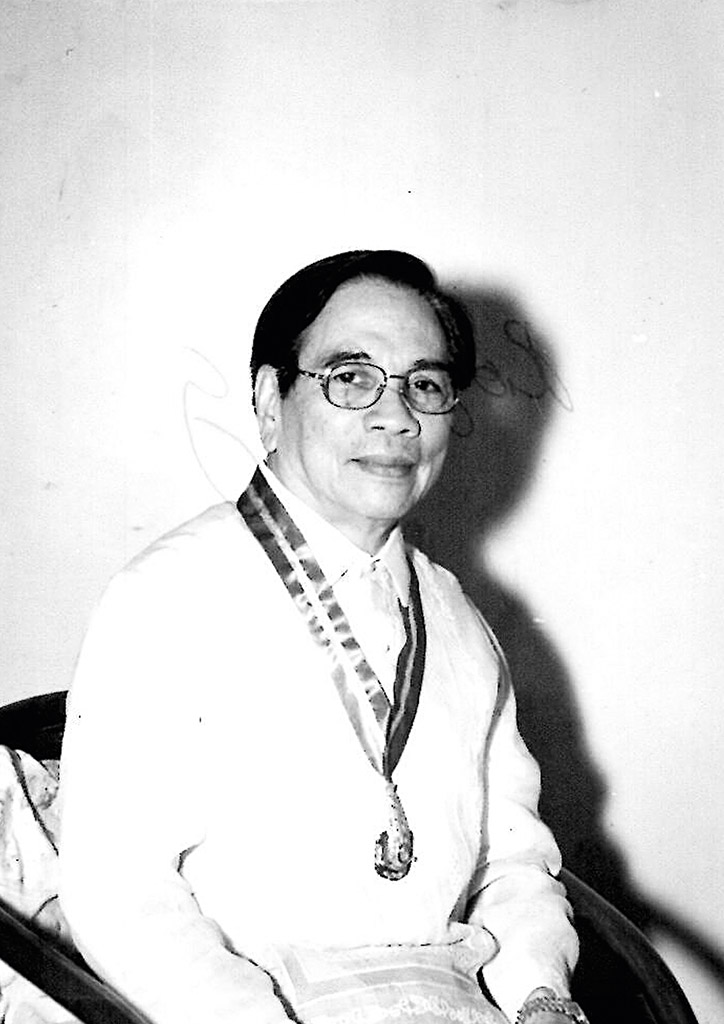
What traits and skills did you look for when hiring people? Of course, I want my employees to be like me—loyal and honest. In my early years, I mostly hired young people. For me, what’s important is the potential. I checked their school records, so I could see if they were good in design or mathematics. Then I’d have them answer some short tests. As long as they knew the basics—manual drafting, designing and presentation/perspectives—I was okay, because I could easily train them. I’m happy that I’ve developed a number of people who were able to start their own office, go abroad or go into another business, like construction.
What was your mentorship like? The same way I was trained. I taught them how to handle their own projects. I was hands-on with the whole design process, so for them it was more a matter of implementing my ideas. The transfer of technology is the least we could do.
Why didn’t you pursue a partnership at this time? I never thought of having a partner, even though a partnership is advantageous because you’re exempted from withholding taxes. I observed that partnerships between architects don’t last. The Mañosa brothers broke up, magkakapatid na ‘yun ah. Si Sinjiong and Garcia din. Si Recio pati Casas. Tumatagal lang kapag father and son. Juan Nakpil’s sons continued his firm, it became Nakpil, Inc. That’s why I just waited for my son, Roy, to graduate, then I made him my partner in 1983. From Rogelio G. Villarosa Architects, we changed it to R. Villarosa Architects.
READ MORE: Meaningful by Design: An Interview with Lyndon Neri (part 1)
What was the business climate like during Martial Law? Nung start ng Martial Law, nag-level-up ‘yung economy. In 1976, when the IMF meeting was going to be held here, akyat ang construction. That’s when the Mandarin Hotel, Manila Peninsula, Westin Hotel, and Manila Hotel were built. Fortunately for me, I was part of that construction boom. Some of my projects were the Philippine Village extension, Silahis International Hotel in Roxas Boulevard. I had about four hotels during that time, 1972 to 1976.

How did you land all those projects? Can you share any tips on presenting to clients, or networking? To begin with, we never went after a project. I can assure you, in 44 years of practice, I never lifted a finger to chase a project.
Wow, really? How did you get all those projects, then? Well, the telephone just rings! [laughs] When I first set up my office in 1972, all I did was put up a notice in the newspaper that said, “Roger Villarosa has a new number,” and the number was there. That’s it. No mention that I was on my own now. I was not allowed to advertise anyway. Pagtawag ng client, dun ko lang sasabihin na wala na ako sa Formoso. Madami namang tumatawag!
Clients write me letters, too. Just recently, I saw this lot near the office, and I was curious to know who owned it. I asked Roy if he knew, and he said no. That same afternoon, he received a letter from the owner of that lot asking if we could do the building. Roy asked me if I called them, and I said no! [Laughs]
It helps that I was able to gain several clients’ trust during my developmental years, even if I never set out to do that. All I know is that a happy client will always look for the next project for you. That’s why National Bookstore has been our client for 44 years, and Filinvest for 46. Clients recommended me to other people, that’s why I always had projects that helped me get through economic ups and downs.
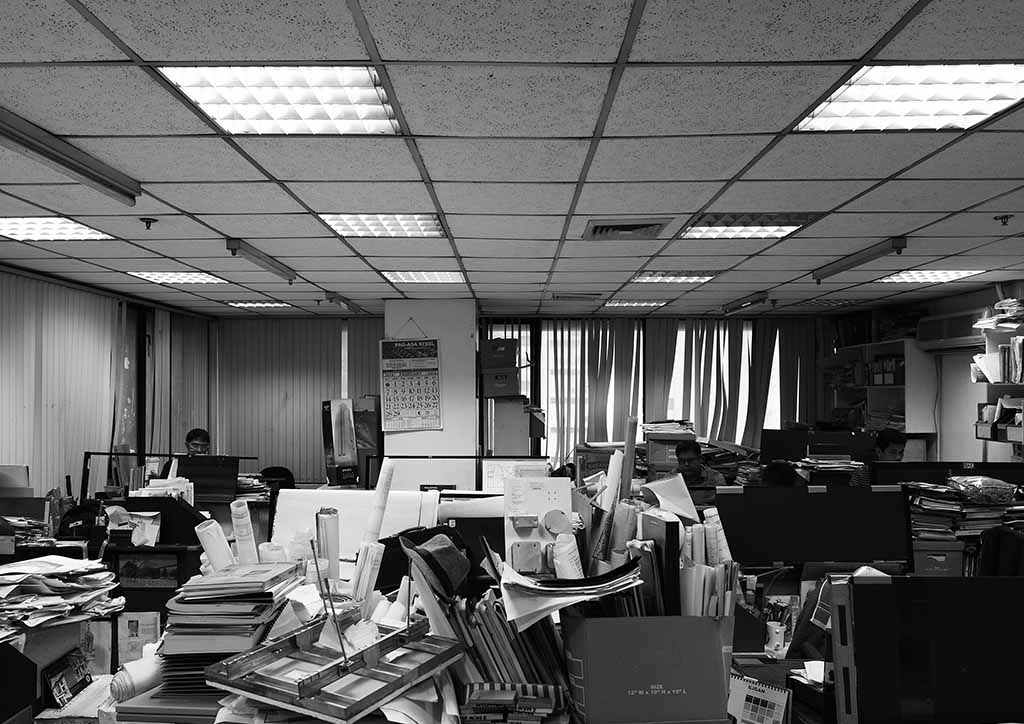
The Martial Law construction boom didn’t last long. When the economy plunged, did you let people go? Oh yes. After the assassination of Aquino, the economy collapsed. I couldn’t support all of my employees, but I didn’t want to fire or make retrenchments, so I gave them options. We could divide the working hours, or alternate shifts—one group could work on certain days of the week, and another on the remaining days. Siyempre babawasan ‘yung sweldo nila. I left it up to them, and expected them to understand the situation.
Most of them thought it would be best if they went abroad. From 80 people, we shrank to about six or eight! We still had about three to four ongoing projects, which helped us survive. That wasn’t the only time we faced an economic crisis. Things picked up again after 1986…pero nung 1990, bumagsak uli! Umakyat hanggang 1997, tapos Asian crisis naman! But I managed to roll with the punches. I can say I became immune—sanay na—to the ups and downs of the economy.
Is that the secret to your success and longevity? Maybe. I live by this philosophy: We should enjoy waiting. I believe that is essential to living a fulfilling life. Life is a series of waiting for things—your doctor, your flight, etc. Even our life is one big wait for our death, so make the most of it. Case in point: During a 12-hour flight to San Francisco, I drew up the concept for the Tektite Towers in Ortigas. So make the most of your waiting. Don’t be annoyed or bored. Grab every opportunity by the neck before it passes you by.
This first appeared in BluPrint Special Issue 1 2016. Edits were made for BluPrint online.
READ MORE: Learning from mistakes: Arkisens and 6×6 Builders


